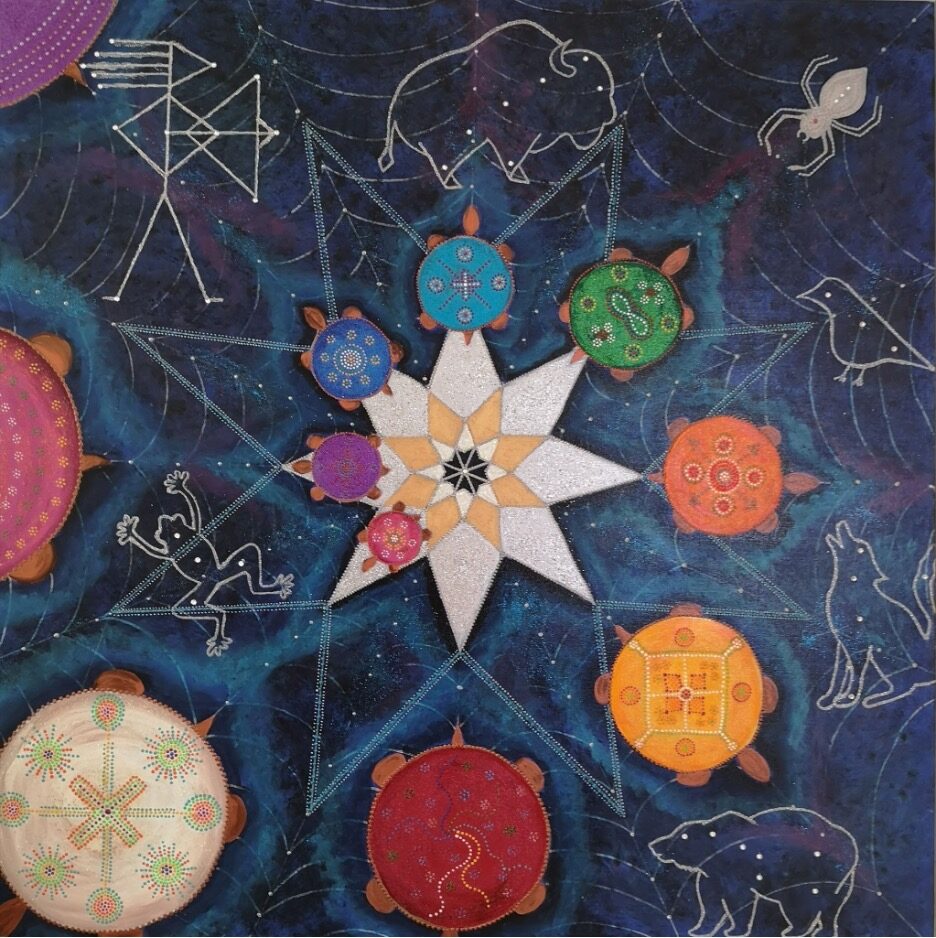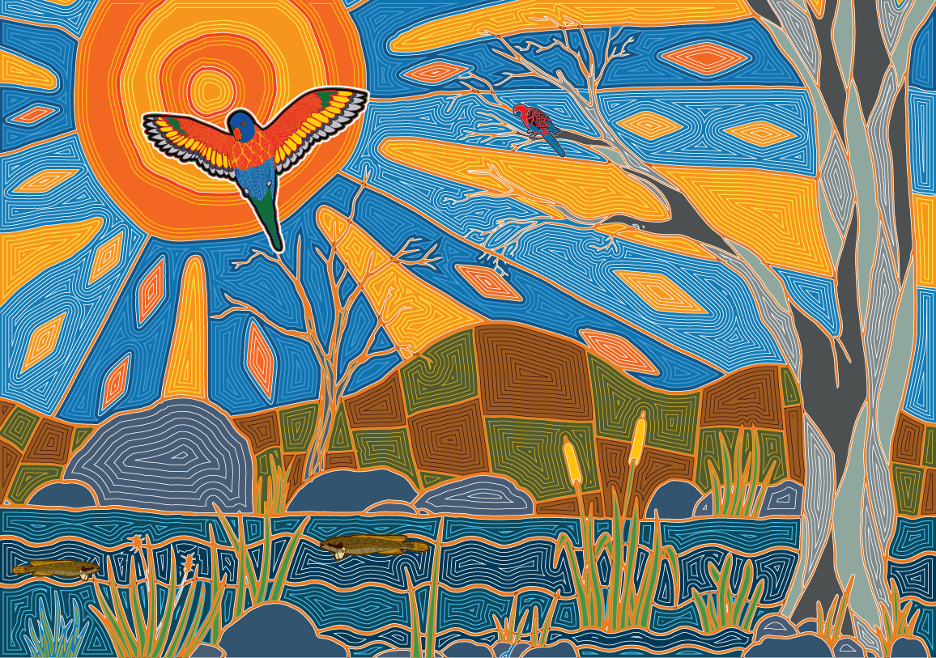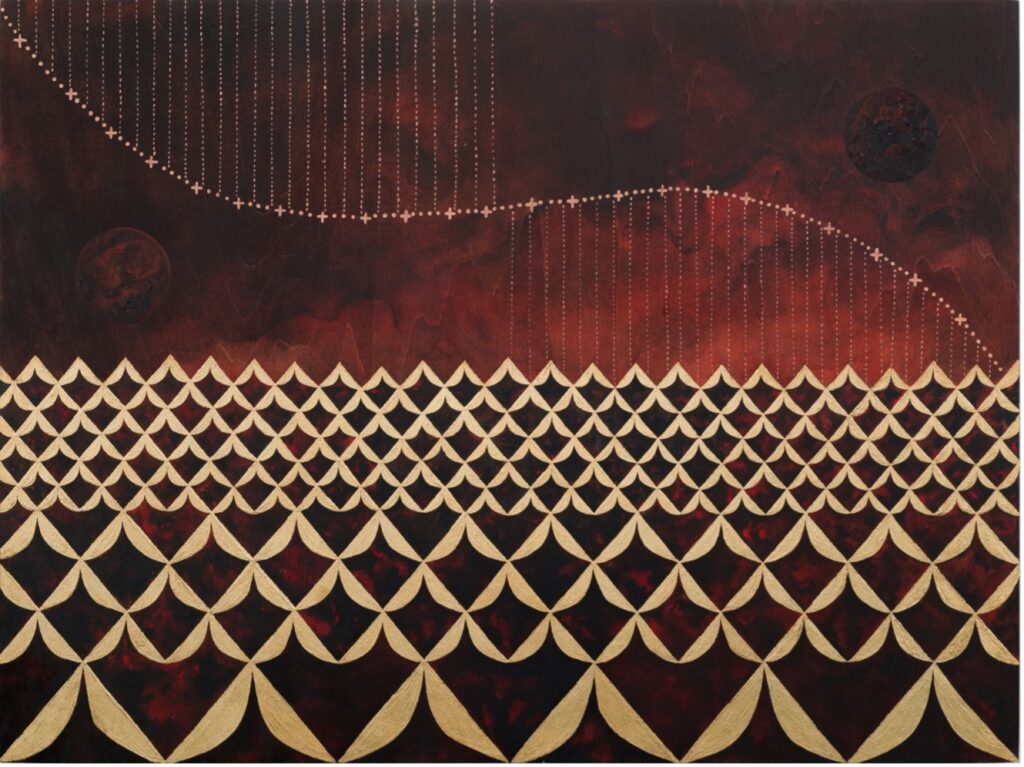
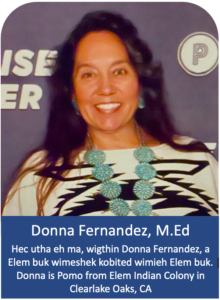
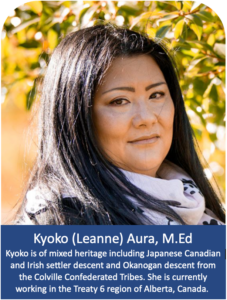

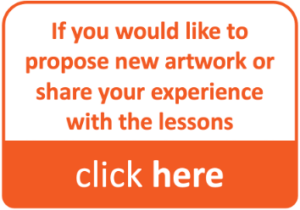 Jo Boaler and Cathy Williams received a lovely invitation to visit the Senpaq’cin School, a First Nation school in Canada, to work with teachers and students. During their time with the elementary and middle school students they shared an image and asked them – What do you see? What do you think of when you see this image? What does this image mean to you? (Original Lesson Here)
Jo Boaler and Cathy Williams received a lovely invitation to visit the Senpaq’cin School, a First Nation school in Canada, to work with teachers and students. During their time with the elementary and middle school students they shared an image and asked them – What do you see? What do you think of when you see this image? What does this image mean to you? (Original Lesson Here)
Students described the image as a dream catcher and they shared the meaning of the image for themselves, their families, and their culture.
After they listened to the students’ stories Jo and Cathy asked: What else do you notice in this image? What do you see?
Students told them that they saw a book, a laptop, a river, a medicine wheel, and a house. They also saw mathematical shapes including triangles, and parallelograms. Some students saw 3-D images, like a room with walls. The students enjoyed sharing what they saw in the shape, and Jo and Cathy let this part of the lesson go on for over 10 minutes to make sure everybody was able to share and everyone had time to see and understand what others were describing.
Jo and Cathy then shared with students that mathematics is a lens that we can lay on the world, and when we do that we see more. They talked about mathematizing different shapes we see in the world.
The visit was a very special one, that became even more special a week or so later when one of the teachers in the school, Lisa Van den Munckhof, extended the lesson, inviting the students to design their own dreamcatchers and then analyze the algebraic functions inside them. Lisa shared her lesson slides with us here.
After this visit, when Jo and Cathy learned so much about the importance of sharing our Indigenous people’s culture, they were inspired to start a new initiative at youcubed. Jo reached out to youcubians through our newsletter, which resulted in a group of over 117 educators coming together – all of whom are Indigenous themselves or work in Indigenous education – from Australia, Brazil, Canada, New Zealand, and the US. Together they decided to share more art that comes from Indigenous artists, so that students everywhere, whether they are Indigenous or not, can learn more about Indigenous cultures from around the world, and see the ways mathematics is represented, beautifully, in the world.
The National Council of Teachers of Mathematics (NCTM) has published an article about this work, you can read it here.
Curious about Indigenous Peoples in your area or around the globe? Click here to view an interactive Native Land map.
Interested in joining our Indigenous Maths Focus Group? Submit a request by filling out this form.
We hope that you and your students enjoy this experience as they develop new connections and appreciations for art, indigenous heritage, and mathematizing the world. Click on any box below to download a lesson plan in Google slides for the featured artist.

